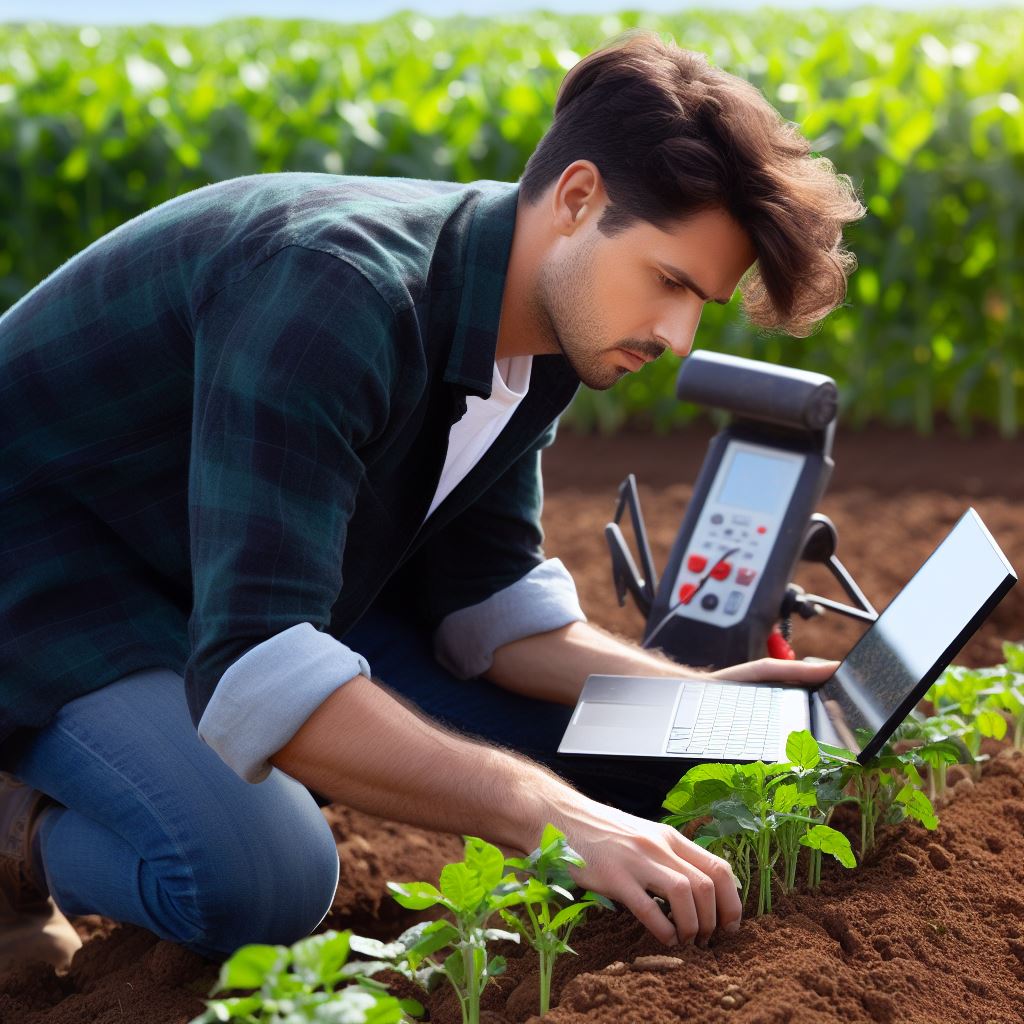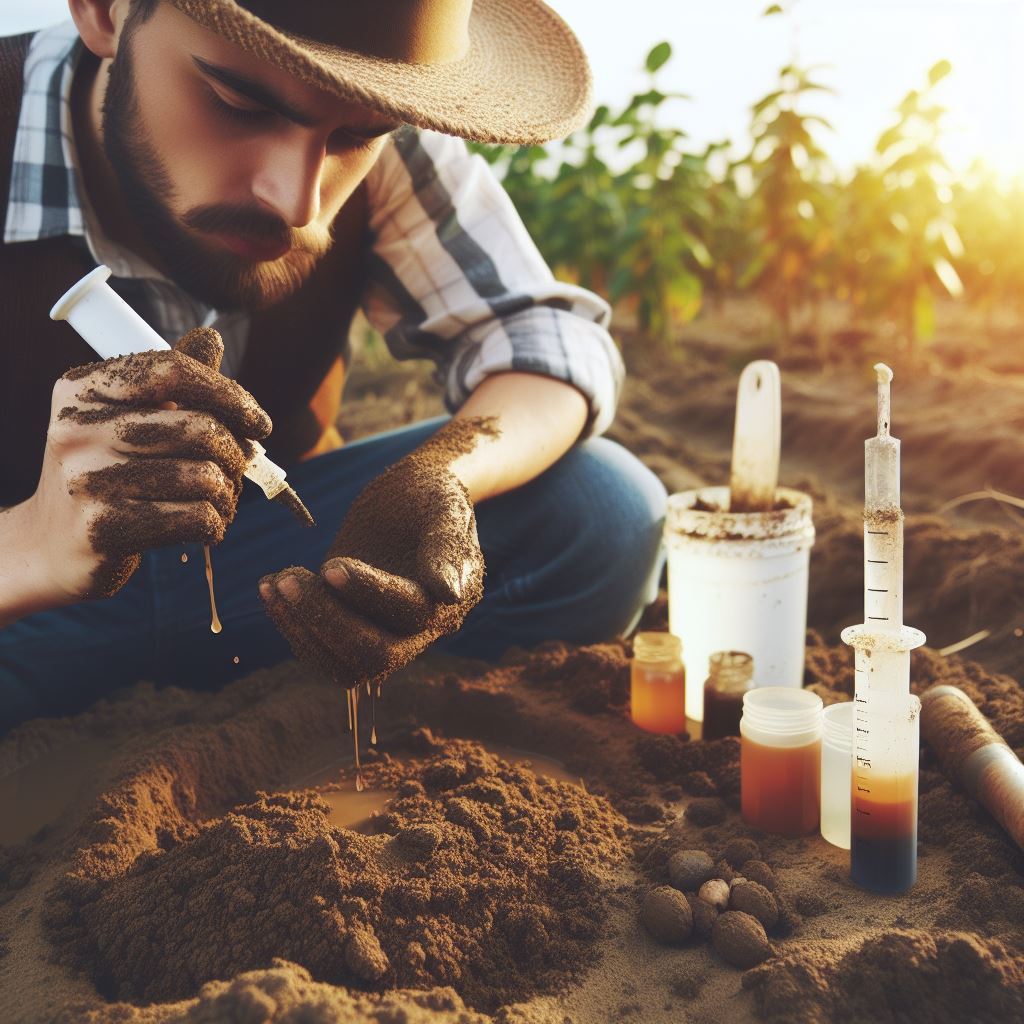Introduction
Following a seasonal guide for vegetable farming is crucial for success in this agricultural practice.
By understanding the importance of such a guide, farmers can optimize their operations and maximize productivity.
Additionally, vegetable farming offers numerous benefits, such as providing healthy food, sustaining the environment, and supporting local economies.
A seasonal guide provides farmers with the necessary information to plant, maintain, and harvest crops at the right time.
This ensures optimal growing conditions and helps prevent potential problems that may arise from improper timing.
Following the guide helps farmers make informed decisions and adapt their practices to specific seasonal requirements, avoiding unnecessary loss and waste.
Vegetable farming plays a crucial role in promoting a healthy lifestyle, as it offers a diverse range of nutritious produce year-round.
Moreover, vegetable crops contribute to environmental sustainability by reducing soil erosion, conserving water, and decreasing the reliance on synthetic chemicals.
Additionally, this form of farming supports local economies by creating jobs and promoting community engagement through farmers’ markets and CSAs (Community Supported Agriculture).
In short, following a seasonal guide for vegetable farming is of utmost importance for achieving optimal results.
It allows farmers to make informed decisions and adapt their practices accordingly.
Vegetable farming also brings numerous benefits by providing nutritious food, sustaining the environment, and supporting local economies.
By embracing this guide, farmers contribute to a healthier and more sustainable future.
Spring Season
Now that spring is in full bloom, it’s time to roll up your sleeves and get your vegetable farm ready.
Here are some tips to ensure a successful harvest:
Transform Your Agribusiness
Unlock your farm's potential with expert advice tailored to your needs. Get actionable steps that drive real results.
Get StartedBest vegetables to plant in the spring
- Tomatoes: choose varieties with shorter maturity dates for optimal growth.
- Cucumbers: sow seeds directly into the ground as they do not tolerate transplanting well.
- Spinach: this leafy green thrives in cool temperatures and can be harvested multiple times.
- Carrots: start planting these root vegetables early in the spring for a bountiful harvest.
- Lettuce: choose loose-leaf varieties that are quick to mature and resistant to bolting.
Soil preparation techniques for spring planting
Preparing your soil is essential to ensure the healthy growth of your vegetable crops:
- Clear any weeds, debris, or old plant material from your planting area.
- Loosen the soil using a garden fork or a tiller to improve its structure and drainage.
- Add organic matter, such as compost or well-rotted manure, to enrich the soil.
- Perform a soil test to determine the pH levels and make any necessary adjustments.
- Ensure proper drainage by leveling the soil and creating raised beds if needed.
Pest and disease control during the spring season
Protecting your vegetables from pests and diseases is crucial for a successful harvest:
- Inspect your plants regularly for any signs of pests, such as aphids, caterpillars, or snails.
- Introduce beneficial insects like ladybugs or lacewings to combat common pests.
- Use organic pest control methods like neem oil or insecticidal soap to deter pests.
- Practice crop rotation to prevent the buildup of disease-causing pathogens in the soil.
- Remove and destroy any infected plants to prevent the spread of diseases.
Watering and irrigation tips for spring vegetable farming
Proper watering is essential to keep your vegetables happy and thriving throughout the spring:
- Water your plants deeply and regularly, aiming for at least one inch of water per week.
- Avoid overwatering by ensuring proper drainage and not letting the soil become waterlogged.
- Mulch around your plants to help retain moisture, prevent weed growth, and regulate soil temperature.
- Consider drip irrigation systems to provide a consistent water supply directly to the plants’ roots.
- Water early in the morning to reduce evaporation and give plants ample time to dry before nightfall.
By following these guidelines for spring vegetable farming, you’re sure to have a thriving and abundant harvest.
Enjoy the fruits (and vegetables) of your labor!
Read: Precision Agriculture: Tech in Crop Cultivation
Summer Season
Vegetables that thrive in the summer season
- Tomatoes: These sun-loving plants produce juicy and flavorful fruits in the summer heat.
- Cucumbers: With proper care, cucumbers yield abundant harvests with a refreshing crunch.
- Peppers: Whether it’s bell peppers or chili peppers, they thrive in the warm summer temperatures.
- Zucchini: This versatile summer squash grows quickly and can be used in various dishes.
- Green beans: These legumes enjoy the heat and produce a bountiful crop during the summer months.
Techniques for managing weeds in summer
- Mulching: Apply a thick layer of organic mulch around plants to suppress weeds and retain moisture.
- Hand pulling: Regularly inspect the garden and remove weeds by hand before they have a chance to spread.
- Mowing or cutting: Trim weed growth using a mower or scissors to prevent them from setting seeds.
- Weed barriers: Use landscape fabric or plastic sheets to prevent weed growth in specific areas of the garden.
- Crop rotation: Rotate crops each season to disrupt weed reproduction and break their lifecycle.
Fertilization practices for healthy summer crops
- Soil testing: Determine nutrient deficiencies and pH levels to guide fertilizer application.
- Organic compost: Add compost to enrich the soil with essential nutrients for healthy plant growth.
- Slow-release fertilizers: Use fertilizers that gradually release nutrients to support continuous growth.
- Foliar feeding: Spray liquid fertilizers directly onto leaves for quick nutrient absorption.
- Adjusting nitrogen levels: Increase nitrogen in the early stages of growth and reduce it during fruiting.
Tips for dealing with common summer pests and diseases
- Insect monitoring: Regularly inspect plants for any signs of pest infestation and take immediate action.
- Natural predators: Encourage beneficial insects like ladybugs or lacewings to control pest populations.
- Organic sprays: Use homemade insecticidal soaps or neem oil to combat pests without harming beneficial insects.
- Disease-resistant varieties: Select plant varieties that are less susceptible to common diseases in your area.
- Good hygiene: Practice proper sanitation by removing infected plants or parts to prevent disease spread.
Strategies for efficient watering and irrigation in the hot summer months
- Water deeply: Provide plants with a thorough soak, allowing moisture to reach the root zone.
- Morning watering: Water early in the day to minimize evaporation and allow foliage to dry before evening.
- Drip irrigation: Use drip systems to deliver water directly to the plant roots, reducing water loss.
- Mulching: Apply mulch around plants to conserve moisture and prevent weeds that compete for water.
- Water conservation: Collect rainwater in barrels or use water-efficient irrigation techniques like drip tape.
By following these guidelines, you can ensure a successful vegetable farming experience during the hot summer months.
Happy farming!
Read: Cover Crops: Advantages in Crop Management

Find Out More: Managing Pests in Organic Farming
Fall Season
When it comes to vegetable farming in the fall season, there are several important factors to consider in order to ensure success.
From choosing the ideal vegetables to preparing the soil, dealing with pests and diseases, irrigation considerations, and harvesting and storing produce, every step plays a crucial role in maximizing your yield.
Let’s explore each of these aspects in detail:
Ideal vegetables to grow in the fall
- Broccoli: This cool-season crop thrives in the fall and offers abundant harvests.
- Carrots: Ideal for fall planting, these root vegetables mature after the first frost.
- Kale: Known for its hardiness, kale is an excellent choice and can withstand colder temperatures.
- Spinach: This leafy green thrives in cooler weather and can be harvested multiple times.
- Beets: Fall planting ensures sweet and tender beets ready for harvest by late autumn.
- Radishes: Quick-growing radishes are perfect for fall, offering a crisp and refreshing addition to your meals.
Preparing the soil for fall planting
- Start by removing any weeds or plant debris to maintain a clean planting area.
- Loosen the soil using a garden fork or tiller to ensure good drainage and root growth.
- Incorporate organic matter like compost or aged manure to improve soil fertility and structure.
- Test the soil pH and make any necessary adjustments to create an optimal growing environment.
- Mulch the area to protect the soil from erosion and temperature fluctuations.
Pest and disease prevention during the fall season
- Practice crop rotation to prevent the buildup of pests and diseases in the soil.
- Use floating row covers or netting to protect plants from insects and birds.
- Monitor regularly for signs of pests or diseases and take immediate action to prevent spreading.
- Apply organic pest control methods such as companion planting, beneficial insects, or homemade sprays.
- Remove and discard any affected plants to prevent further infestation or spread of diseases.
Watering and irrigation considerations for fall vegetable farming
- Water plants deeply but infrequently to encourage deep root growth and reduce the risk of disease.
- Monitor soil moisture levels and adjust watering frequency accordingly, considering rainfall patterns.
- Water early in the day to allow foliage to dry before evening, minimizing the chance of fungal diseases.
- Utilize drip irrigation systems or soaker hoses to deliver water directly to the plant roots and minimize evaporation.
Tips for harvesting and storing fall produce
- Harvest vegetables in the morning when they are at their freshest and have the highest moisture content.
- Use sharp shears or knives to avoid damaging the plants and ensure a clean cut.
- Properly clean and dry harvested produce before storing them in a cool and dry location.
- 4Utilize root cellars or refrigerators to extend the shelf life of your fall vegetables.
- Check stored produce regularly for signs of spoilage and remove any affected items promptly.
By following these guidelines, you can enhance your fall vegetable farming success and enjoy a bountiful harvest.
Remember to stay proactive in managing pests and diseases, provide adequate water, and store your produce properly to maximize its longevity. Happy farming!
Read: Techniques for Healthy Soybean Growth
Winter Season
Winter brings colder temperatures and frost, but that doesn’t mean vegetable farming comes to a halt.
In fact, there are plenty of winter vegetables suitable for cold climates.
Let’s explore some strategies and tips for successful farming during this season.
Winter Vegetables Suitable for Cold Climates
- Kale: This hardy vegetable thrives in cold temperatures and can be harvested throughout the winter.
- Brussels Sprouts: These nutrient-packed mini cabbages love the cold and are perfect for winter farming.
- Carrots: With a layer of mulch, carrots can withstand cold temperatures and be harvested all winter.
- Spinach: A winter favorite, spinach grows well in cooler temperatures and can be picked in the frost.
- Winter Squash: Varieties like butternut and acorn squash can be stored for long periods and harvested in winter.
- Beets: Cold temperatures enhance the sweetness of beets, and they can withstand light frost.
Strategies for Protecting Crops from Frost and Cold Temperatures
- Use Row Covers: These lightweight fabric covers can provide insulation to crops and protect them from frost.
- Mulching: Apply a layer of organic mulch around the plants to insulate the soil and prevent freezing.
- Cold Frames: These structures capture solar heat and create a microclimate, protecting crops from harsh cold.
- Crop Rotation: Regularly rotating crops helps prevent the buildup of pests and diseases that thrive in winter.
- Watering Techniques: Water plants early in the day to allow sufficient time to dry before temperatures drop.
- Windbreaks: Planting a barrier of trees or shrubs can shield crops from strong winds and reduce cold damage.
Fertilization and Soil Maintenance in the Winter Season
- Soil Testing: Test the soil to determine its nutrient content and adjust fertilization accordingly.
- Organic Matter: Add compost or well-rotted manure to improve soil structure and retain moisture.
- Cover Crops: Planting cover crops like winter rye or clover helps prevent soil erosion and adds nutrients.
- Adequate Drainage: Ensure proper drainage to prevent waterlogging and root rot in winter months.
Pest and Disease Management During Winter Farming
- Monitor Regularly: Check plants for signs of pests or diseases and take action promptly.
- Crop Rotation: Avoid planting the same family of vegetables in the same location from year to year.
- Row Covers: Use covers to prevent pests like aphids from attacking crops during the dormant season.
- Pruning: Remove dead or diseased plant parts to prevent the spread of diseases.
- Neem Oil: Apply organic neem oil as a natural insecticide to control common winter pests.
Tips for Successful Winter Harvesting and Storage
- Timing: Harvest vegetables when they are mature but before the ground freezes complete
- Proper Handling: Handle crops gently to avoid bruising or damage during harvesting.
- Storage Conditions: Store winter vegetables in a cool, dark, and dry place to maintain freshness.
- Root Cellar: Consider building a root cellar, which provides ideal conditions for long-term vegetable storage.
- Regular Inspections: Regularly check stored vegetables and remove any spoiled or rotting ones promptly.
As winter arrives, don’t let the cold discourage you from vegetable farming.
By selecting the right winter vegetables, implementing protective strategies, and following proper maintenance and storage techniques, you can achieve farming success even during the coldest months.
Read: Drip Irrigation: Saving Water in Crop Fields
Conclusion
Following a seasonal guide is crucial for achieving success in vegetable farming.
It ensures that farmers are well-prepared for each season, optimizing their chances of a bountiful harvest.
Showcase Your Farming Business
Publish your professional farming services profile on our blog for a one-time fee of $200 and reach a dedicated audience of farmers and agribusiness owners.
Publish Your ProfileI encourage farmers to take advantage of the tips and techniques outlined in the guide.
By utilizing these strategies specific to each season, farmers can enhance their farming practices and increase their chances of success.
A well-planned vegetable farming endeavor can bring about numerous rewards.
Not only can farmers enjoy a higher yield, but they can also expect healthier crops and potentially higher profits.
By adhering to a seasonal guide, farmers can better manage pest control, irrigation, and soil fertility–leading to healthier plants and fewer crop losses.
Additionally, understanding which crops thrive in specific seasons allows farmers to make informed choices regarding planting and cultivating practices.
A well-informed farmer who prioritizes following a seasonal guide is more likely to achieve long-term success in vegetable farming.




